All about three-bladed almonds
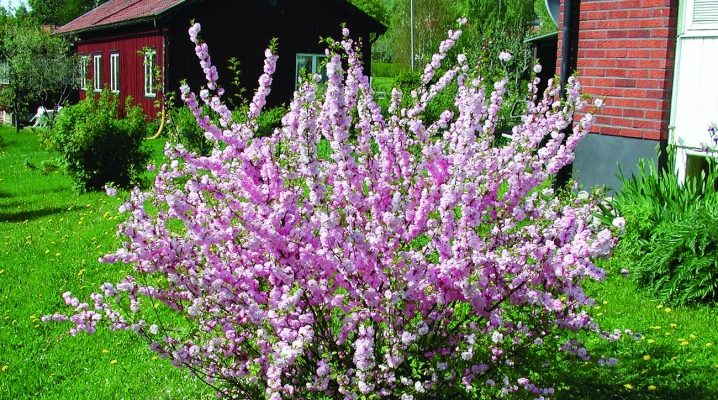
All about the three-lobed almond, picturesque and beautiful shrub, you need to know those who decided to create a bizarre and unusual composition on their landholdings. Plants, still classified as exotic in Europe, are incredibly picturesque during the flowering period. Gardeners associate them with apricot or plum, and sometimes they are even compared to sakura. The variety of flower colors is not the only opportunity for amateur designers to embody their creative ideas. Three-lobed almonds can be grown to a height of 5 meters or limited to pruning to a small, compact bush.
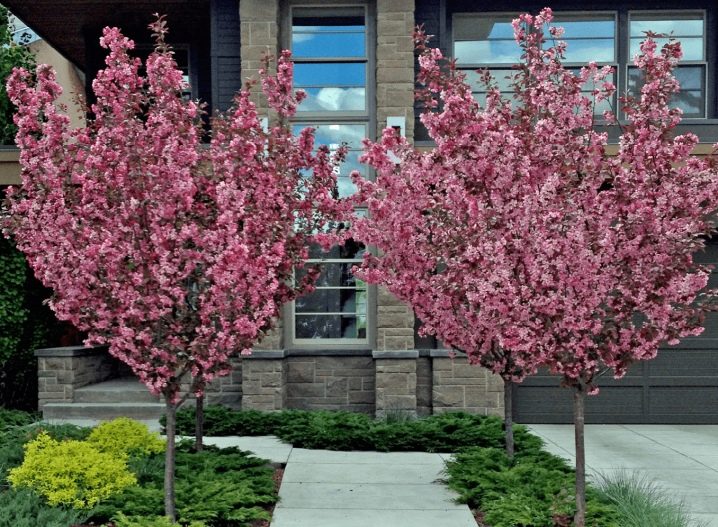
Description
Three-lobed almond (prunus triloba) is a compact deciduous tree or shrub. It is brought from East Asia and is often found in China and North Korea. Love for him has led to the emergence of numerous hybrids. The wild plant migrated from a considerable height above sea level and became widespread and in demand. Until recently, it was attributed to the representatives of a separate family, but now it belongs to the genus plum, which includes plum, cherry and almond as subgenera. The last category is divided into three-lobed almonds and the other 35 types.
Chinese terry plum, aflatunia and luiseania are synonyms for the name of a plant, often referred to as a tree, or a shrub, or a tree-like one. The only thing that fans of culture are unanimous about, during the flowering period, is a real piece of a fairy tale, a piece of a wondrous country.
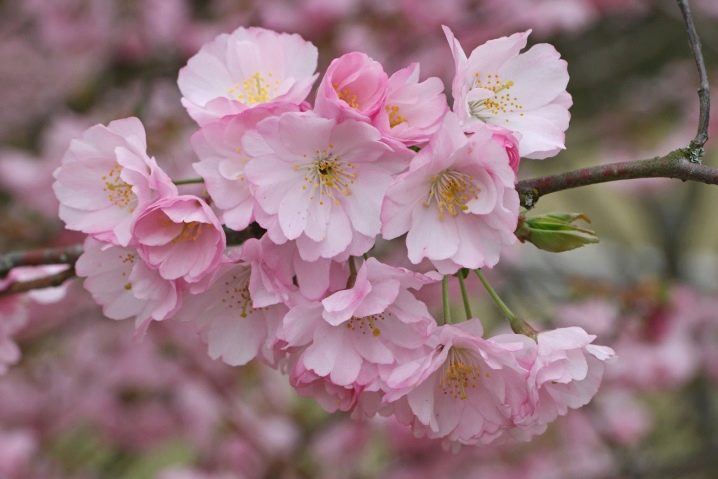
Its double inflorescences for 2 weeks can turn any garden into spring splendor.
-
Stam - the most common method of growing three-lobed almonds. The top of the bush is tied to a peg and after a few seasons a tree with a rounded crown is obtained by pruning the side shoots. If you want to immediately get a decorative element for your landscape, you can purchase it ready-made in a good nursery.
-
Bush fruit rarely become the goal of cultivation, it is a small drupe with sour pulp, which can be ennobled with agrotechnical tricks. During the ripening period, they give the bush an additional decorative effect.
-
Three-lobed almonds are good in autumn: the three-lobed leaves at the end acquire all sorts of shades of red, reddish and yellow, and in the warm season they are of a pleasant green color.
-
Bloom describe in different ways, the reason for this is the abundance of varieties grown by breeders. Flowers can be paired or single, in red or pink tones, with ovoid or lanceolate sepals, double. The small size is compensated by the abundance of flowers on young plants.
-
Powerful root system, obtained from a past life - growing in mountainous areas at high altitudes, is used to strengthen the soil if almonds are planted on the edge of a cliff or on a fragile slope.
-
Bush height also indicates different - from 2 to 5 meters, but this is easily explained by the varietal affiliation. The crown is usually round and spreading, but since the shrub requires constant pruning, it can be given bizarre shapes.
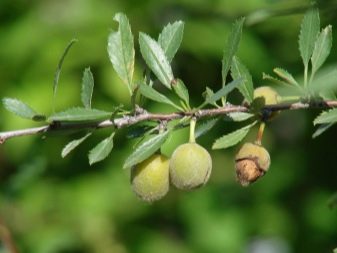
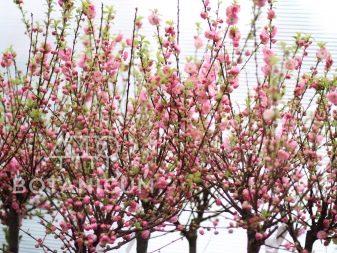
Love for three-bladed almonds is experienced not only in China or Korea, the shrub is in demand in Europe and in Russia: it has an average frost resistance and easily tolerates a temperate climate.In different nurseries, you can find simple and already designed seedlings.
You just need to determine the priorities, choose the variety that is most suitable for the climatic conditions, the peculiarities of the relief of your land tenure, and decide on the use of landscape design in the general style solution.
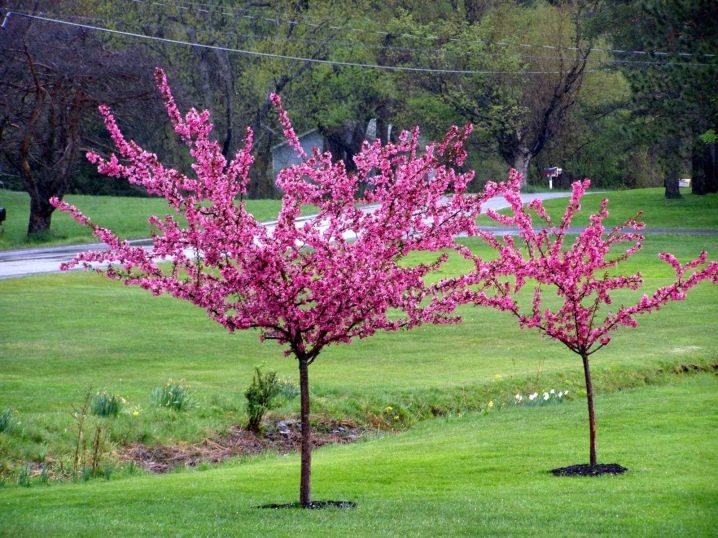
Varieties
The whimsical variety of varietals is due to the work of breeders throughout the post-Soviet space. The second name common among gardeners is Siberian sakura. It speaks not so much about the firmness of the plant as about its beauty and decorativeness.
Of the most common, several of the most beautiful varieties can be listed.
-
Rosenmund Is the most commonly used variety. It is known for the longest flowering period and the absence of fruits that take away the strength from the tree. Already for 2-3 years, you can contemplate abundant double flowers of an intense pink hue. Rosenmund blooms in mid-spring and is pleasing to the eye for a month. Leaves appear later.
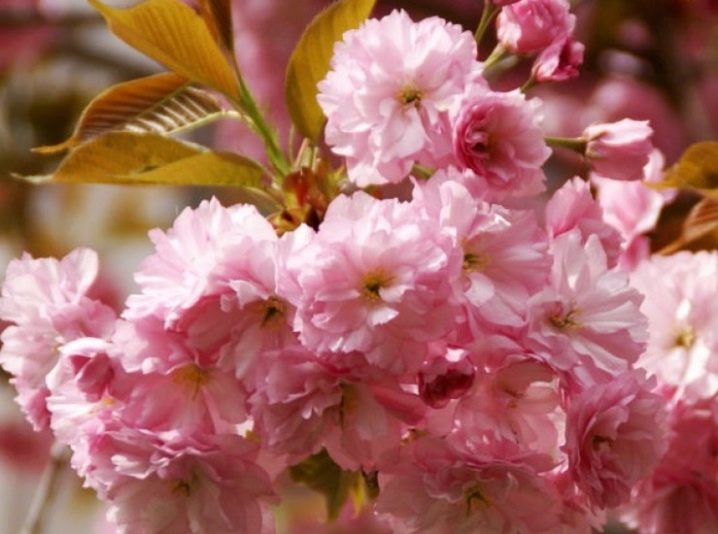
- "Tanyusha" - with flowers of a crimson shade with a diameter of 3.5 cm. It is known as the variety with the greatest doubleness, in terms of flowering duration it is not inferior to the previous variety.
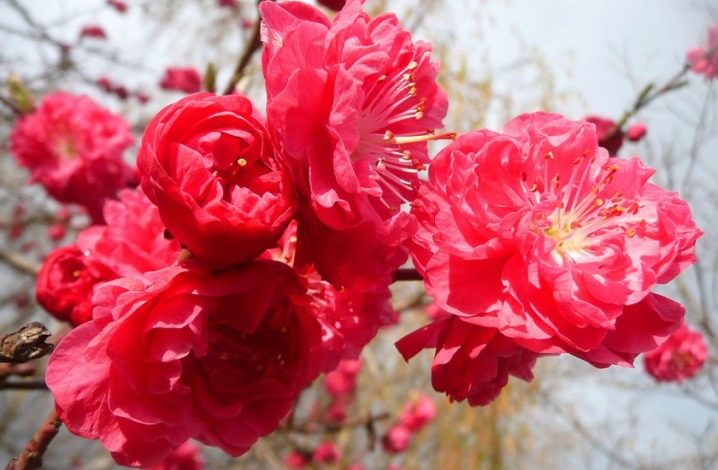
- "Captivity" - the most beautiful terry louiseania. Her leaves bloom at the same time as flowers, and flowering looks very picturesque against a green background.
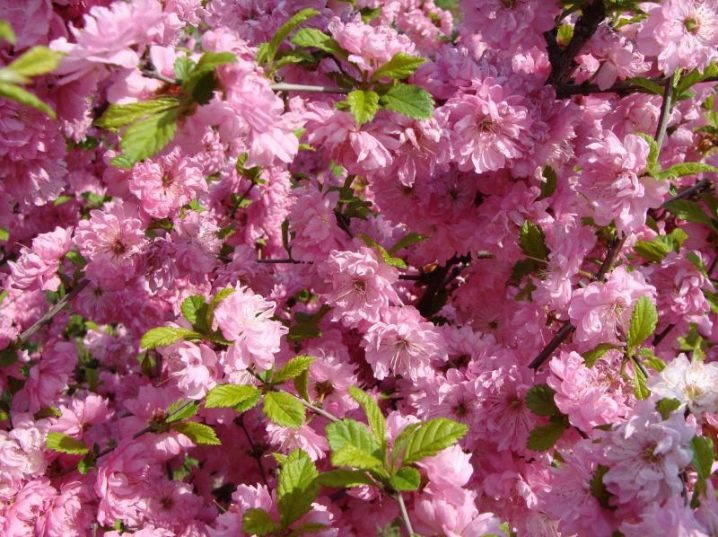
- "Snows of Uimura" - this Siberian sakura can please the gardener with the double effect of its long flowering. Large double flowers, first of a pale pink, delicate shade, and then turn it into an incomparable cream.
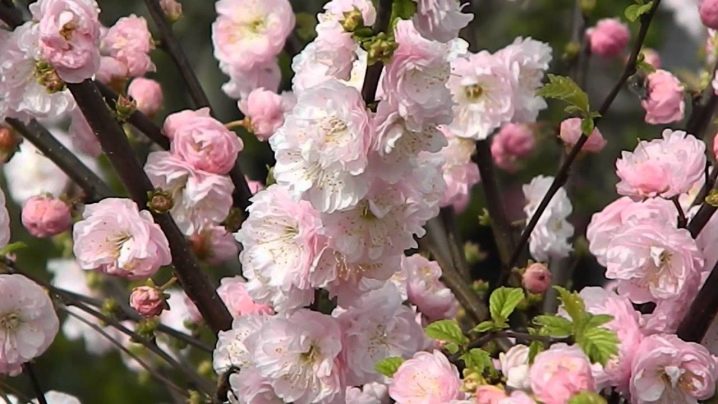
- "Chinese" - in the spring dissolves simple light pink flowers. But it is appreciated for its early dates and the abundance of decorative component - it is literally strewn with numerous flowers.
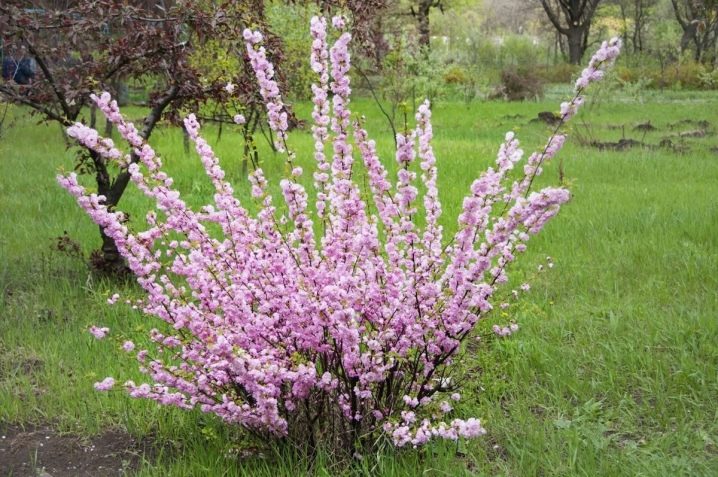
- "Pink foam" - a variety, the name of which is quite eloquent, because the flowers resemble small roses. Often, unknowingly, it is simply called luizeania; it is also found on sale under the name of steppe sakura. This honey plant is distinguished by its particular frost resistance, unpretentiousness to growing conditions, but first of all, by its beauty. This variety has edible fruits that are used as a seasoning in cooking.

In the descriptions of three-bladed almonds, you can find other varieties - "Vesnyanka", "Moonlight", but this is not the whole varietal variety. Recommendations are usually given to varieties that are in the proposals of well-known originators or in nurseries with a proven reputation.
Growing conditions
Almost everyone who is engaged in the cultivation of an ornamental plant, note its unpretentiousness, undemanding agricultural technology, but this is a somewhat exaggerated characteristic.
Location
Planting a plant is recommended in well-lit areas, protected from strong winds and constant drafts. Three-lobed almonds are capable of growing in shaded areas, but may refuse to bloom in spring.
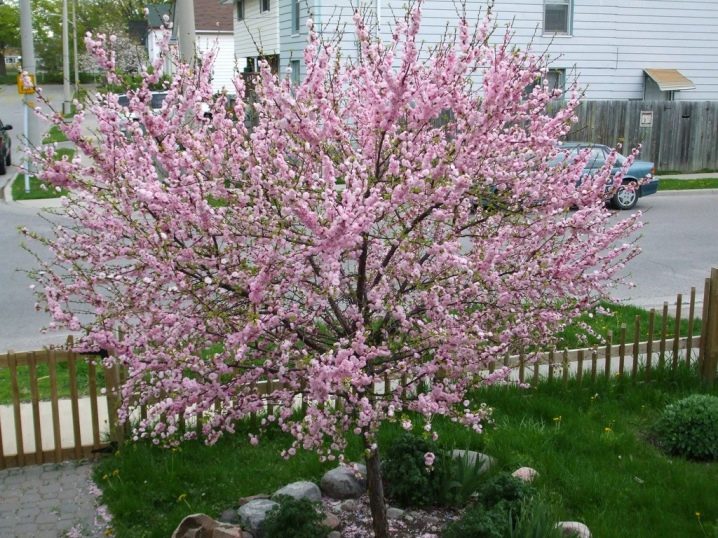
The soil
Special requirements - no surface groundwater... Close proximity does not contribute to the well-being of a shrub or tree. Loam is the best option if it is neutral or slightly alkaline. Sour or chlorine is not suitable.
Fertile soil is ideal, but it also needs to be prepared - dug up in the fall, get rid of weeds, and loosen it again before planting.
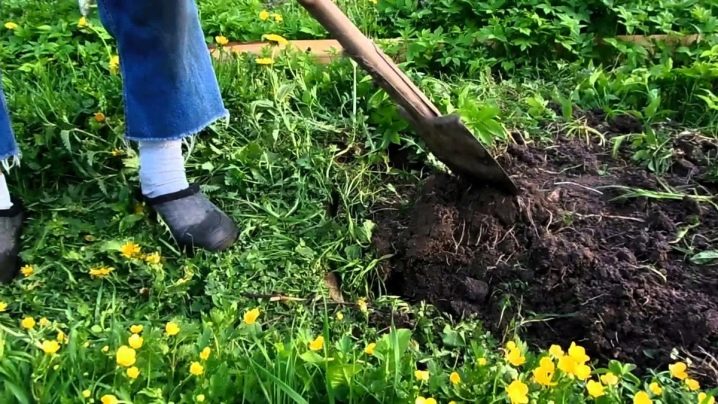
Planting and transplanting
They dig a shallow hole for a seedling, no more than 40 cm, a little wider than the root system or a coma. Drainage is required, a peg in the middle. A 3-meter distance is left from tree to tree. After planting or transplanting, the shrub is watered abundantly and mulched from peat or humus.

Watering
Three-lobed almonds are classified as moderately drought-resistant plants, and only rootstocks need permanent watering. It is recommended to pour water only at the root, not allowing it to fall on branches and leaves, so that putrefactive processes do not develop. Mulch will help to retain the moisture needed by the plant during the rooting process, if the tree is not agronomically manipulated.

Top dressing
Required after flowering, humus is used. After a week, add urea, superphosphate is used in the fall. After application, you need to carefully dig up the soil.
An excess of fertilizer can harm rather than benefit.
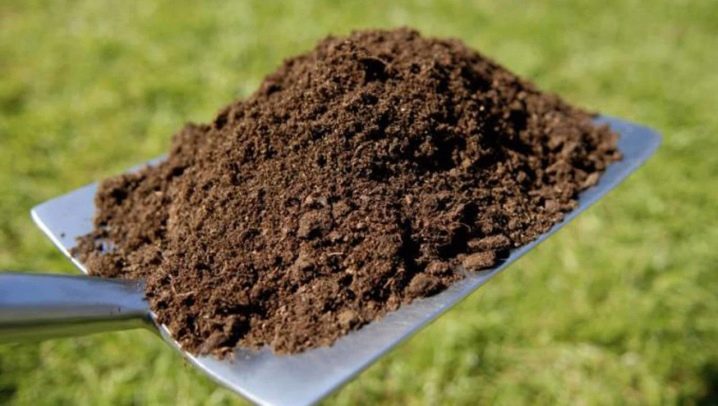
Pruning
Annual is a prerequisite for comfortable growth... Faded shoots are removed, but the most powerful branches should be left in the plant that bears fruit. Sanitary is carried out in the spring, dried or frozen shoots are removed, in spring mature plants are rejuvenated, removing all 5-year-old shoots. Decorative pruning is also done in the spring, if the designer wants to give the crown a certain shape.
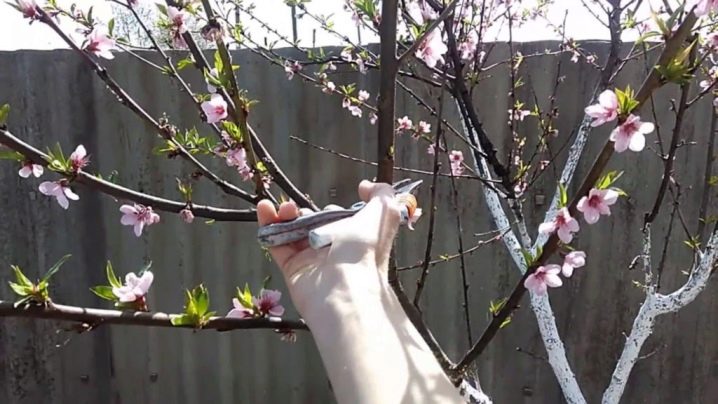
Wintering
In regions with harsh winters, you need to carefully choose a variety or cover three-lobed almonds.
Different species have variable frost resistance, mostly moderate, and only "Pink foam" tolerates frosts down to -40 degrees.
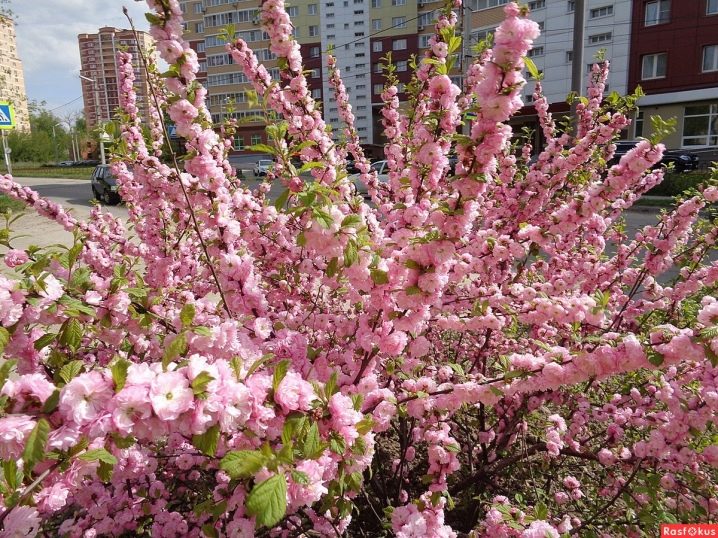
Reproduction
Cutting is the most productive and therefore demanded method among gardeners.... Amateurs vaccinate, seeds are practically not mentioned as a breeding method, but you can try to propagate by layering and root shoots in the process of transplanting a seedling that is 2 years old. At the age of one, at the base of the seedling, in this case, an incision is made and sprinkled with soil. This gives an accelerated development of the root system. Cuttings are done in the middle of summer.

Diseases and pests
Moniliosis - the most dangerous disease of this plant, you can get rid of it at an early stage using Bordeaux liquid.
Insecticides or folk remedies will help deal with leafworm and aphids.
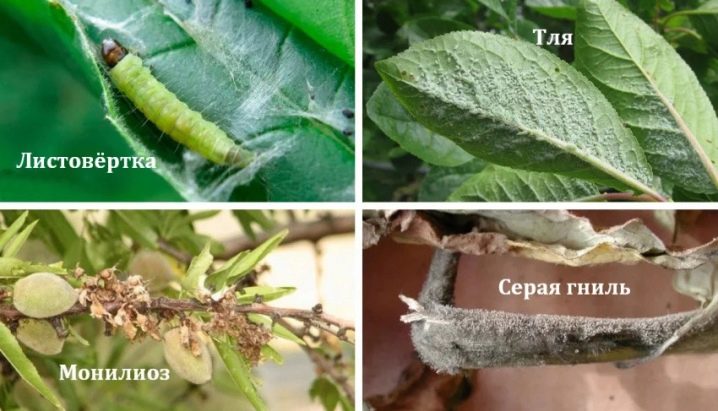
Use in landscape design
The most common option is arrangement of a Japanese garden... However, it is not the only one - almonds look great in rockeries, in composition with conifers, shrubs with other flowering periods. Experts advise creating winning compositions with decorative leafy perennials that bloom for a certain time, Japanese spirea.
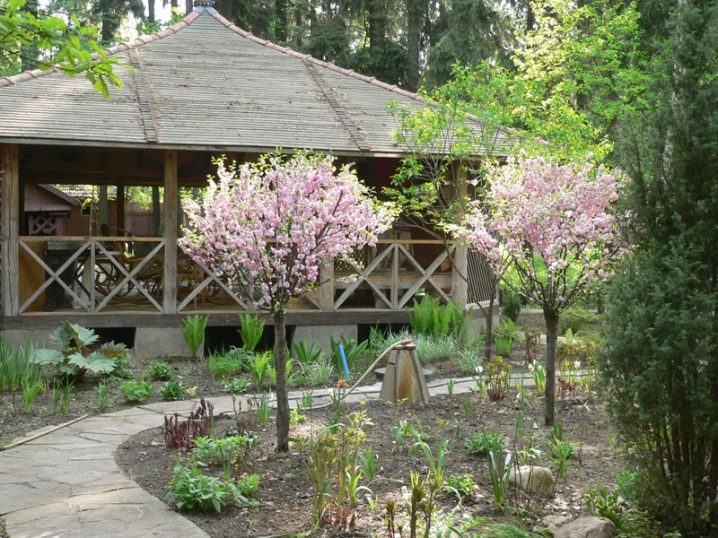
Correct pruning will help to refine and close the space of a forged or transparent fence, which are now in a special trend, to hide the house space from a stranger or unfriendly look... Three-lobed almond is a decorative decoration of any garden plot.








The comment was sent successfully.